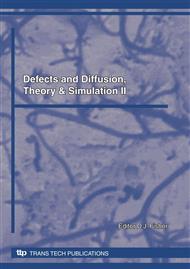p.1
p.13
p.21
p.27
p.37
p.53
p.63
p.75
p.85
Computational Fluid Dynamics (CFD) Based Simulated Study of Multi-Phase Fluid Flow
Abstract:
It is critical to understand multiphase flow applications with regard to dynamic behavior. In this paper, a systematic approach to the study of these applications is pursued, leading to separated flows comprising the effects of free surface flows and wetting. For the first time, wetting phenomena (three wetting regimes such as no wetting, 90 º wetting angle and absolute wetting) are added in the separated flow model. Special attention is paid to computational fluid dynamics (CFD) in order to envisage the relationship between complex metallurgical practices such as mass and momentum exchange, turbulence, heat, reaction kinetics and electromagnetic fields. Simulations are performed in order to develop sub-models for studying multiphase flow phenomena at larger scales. The outcomes show that a proper mixture of techniques is valuable for constructing larger-scale models based upon sub-models for recreating the hierarchical structure of a detailed CFD model applicable throughout the process.
Info:
Periodical:
Pages:
1-11
Citation:
Online since:
December 2010
Authors:
Price:
Сopyright:
© 2010 Trans Tech Publications Ltd. All Rights Reserved
Share:
Citation:


